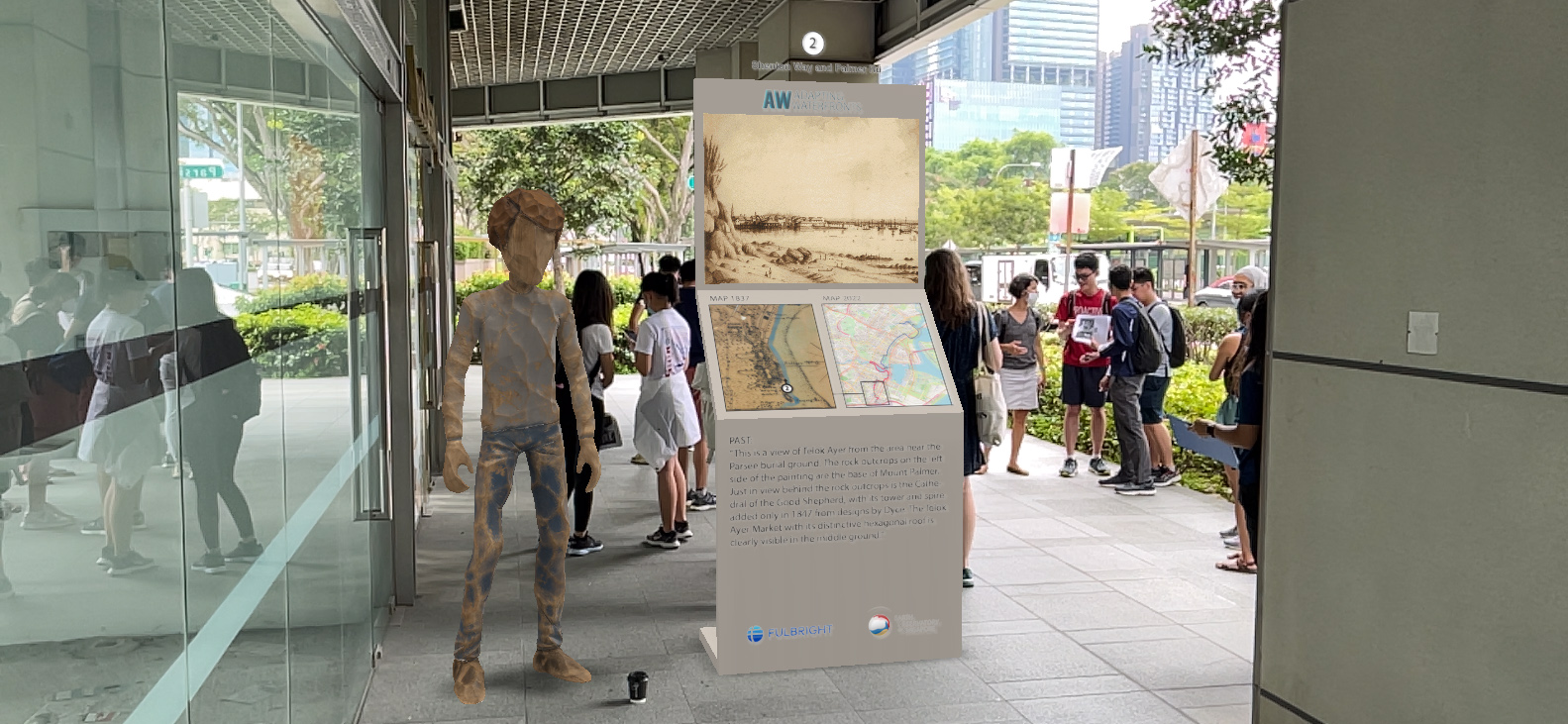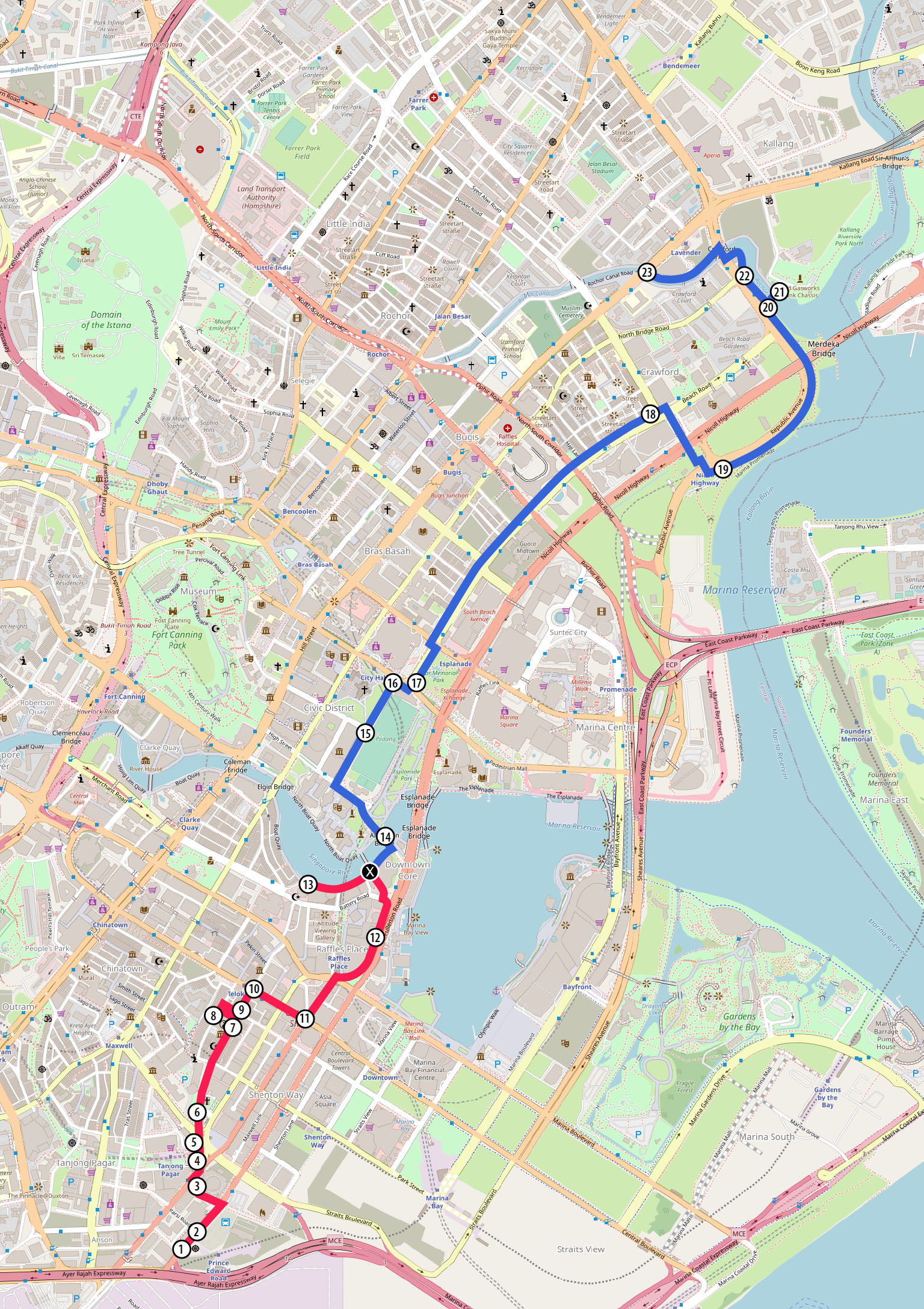Adapting Waterfonts: Postcards from the Future, Singapore 2122
Event Type: Self-guided tour
Date: Ongoing
About the Event
Imagine a postcard sent from Singapore 100 years in the future. What might someone write back and what images would they send to describe how the country has responded to sea-level rise in the 22nd century?
Adapting Waterfronts: Postcards from the future, Singapore 2122 is an interactive installation that addresses these questions and invites the public to explore the past, present, and potential future transformations of the country’s shoreline.
The installation showcases “Postcards from the Future” created by scientists, architects, and artists, that envision sea-level rise adaptation in the 22nd century. These postcards are included into a self-guided tour along a proposed heritage trail of Singapore's historic shoreline, which brings the past and future to life through Augmented Reality (AR) installations that visualise place-based changes across time at designated locations.
Self-guided walks of the Augmented Reality historic shoreline trail are available, taking place along an approximately 7.5km path. Visitors can start anywhere along the path and stop at the different sites to visualise the past, present, and future. Download the guidelines here.

The Adapting Waterfronts project’s unique breadth draws together the creativity from diverse communities across disciplines fostering transdisciplinary collaboration and international cooperation on the global issue of sea-level rise adaptation. The project seeks to inspire collective optimism and empower informed action by reframing the challenges of sea-level rise as an opportunity for design innovation.

Augmented Reality
Email questions to Gabriel Kaprielian: adaptingwaterfronts@gmail.com.
For more information, please visit the Adapting Waterfronts: Postcards from the Future, Singapore 2122 project page.
The Adapting Waterfronts: Postcards from the Future, Singapore 2122 project was developed by Gabriel Tenaya Kaprielian, Assistant Professor of Architecture at Temple University, as part of a U.S. Scholar Fulbright, in collaboration with the Earth Observatory of Singapore at Nanyang Technological University Singapore. Additional support provided by the Collection of the National Museum of Singapore, National Heritage Board and the National Archives of Singapore.